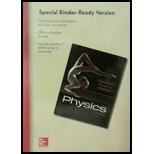
Concept explainers
(a)
The temperature at the copper –steel interface.
(a)
Answer to Problem 117P
Temperature is
Explanation of Solution
Write the equation for thermal conductivity from Fourier’s law of heat
Write the relation between thermal conductivities of copper and steel.
Here,
Write the equation for
Here,
Write the equation for
Here,
Rewrite equation (I) by substituting the above relations for
Write the equation to find the temperature at the copper –steel interface.
Here,
Write the equation for temperature at the copper –steel interface.
Here,
Conclusion:
Substitute
Substitute
Substitute
Therefore, the temperature is
(b)
The rate of evaporation of water from the pan.
(b)
Answer to Problem 117P
Water evaporates at the rate of
Explanation of Solution
Write the equation for heat flow.
Here,
Write the equation for
Here,
Rewrite the heat flow equation by substituting the above relation for
Conclusion:
Substitute
Therefore, the water evaporates at the rate of
Want to see more full solutions like this?
Chapter 14 Solutions
Loose Leaf Version For Physics
 College PhysicsPhysicsISBN:9781305952300Author:Raymond A. Serway, Chris VuillePublisher:Cengage Learning
College PhysicsPhysicsISBN:9781305952300Author:Raymond A. Serway, Chris VuillePublisher:Cengage Learning University Physics (14th Edition)PhysicsISBN:9780133969290Author:Hugh D. Young, Roger A. FreedmanPublisher:PEARSON
University Physics (14th Edition)PhysicsISBN:9780133969290Author:Hugh D. Young, Roger A. FreedmanPublisher:PEARSON Introduction To Quantum MechanicsPhysicsISBN:9781107189638Author:Griffiths, David J., Schroeter, Darrell F.Publisher:Cambridge University Press
Introduction To Quantum MechanicsPhysicsISBN:9781107189638Author:Griffiths, David J., Schroeter, Darrell F.Publisher:Cambridge University Press Physics for Scientists and EngineersPhysicsISBN:9781337553278Author:Raymond A. Serway, John W. JewettPublisher:Cengage Learning
Physics for Scientists and EngineersPhysicsISBN:9781337553278Author:Raymond A. Serway, John W. JewettPublisher:Cengage Learning Lecture- Tutorials for Introductory AstronomyPhysicsISBN:9780321820464Author:Edward E. Prather, Tim P. Slater, Jeff P. Adams, Gina BrissendenPublisher:Addison-Wesley
Lecture- Tutorials for Introductory AstronomyPhysicsISBN:9780321820464Author:Edward E. Prather, Tim P. Slater, Jeff P. Adams, Gina BrissendenPublisher:Addison-Wesley College Physics: A Strategic Approach (4th Editio...PhysicsISBN:9780134609034Author:Randall D. Knight (Professor Emeritus), Brian Jones, Stuart FieldPublisher:PEARSON
College Physics: A Strategic Approach (4th Editio...PhysicsISBN:9780134609034Author:Randall D. Knight (Professor Emeritus), Brian Jones, Stuart FieldPublisher:PEARSON





